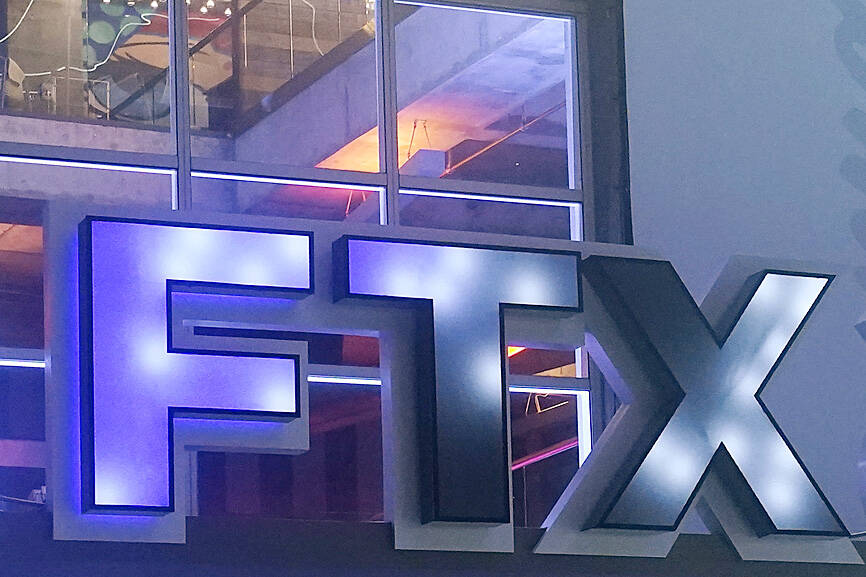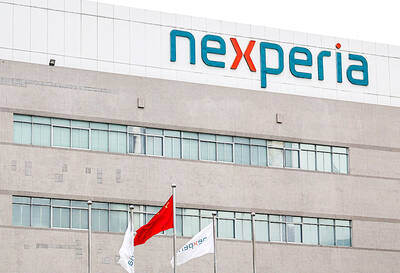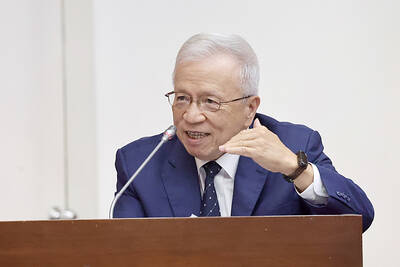The company tasked with locking down the assets of the failed cryptocurrency exchange FTX has said it has recovered and secured US$740 million in assets so far, a fraction of the potentially billions of US dollars likely missing from the company’s coffers.
The numbers were disclosed on Wednesday in court filings by FTX, which hired the cryptocurrency custodial company BitGo hours after FTX filed for bankruptcy on Nov. 11.
The biggest worry for many of FTX’s customers is that they could never see their money again.

Photo: AP
FTX failed because its founder and former chief executive officer Sam Bankman-Fried and his lieutenants used customer assets to make bets in FTX’s closely-related trading firm, Alameda Research.
Bankman-Fried was reportedly looking for more than US$8 billion from new investors to repair the company’s balance sheet.
Bankman-Fried “proved that there is no such thing as a ‘safe’ conflict of interest,” BitGo chief executive officer Mike Belshe said in an e-mail.
The US$740 million figure is from Wednesday last week. BitGo has estimated that the amount of recovered and secured assets has likely risen to more than US$1 billion since then.
The assets recovered by BitGo are locked in South Dakota in what is known as “cold storage” — cryptocurrencies stored on hard drives not connected to the Internet.
BitGo provides “qualified custodian” services under South Dakota law. It is the crypto equivalent of a financial fiduciary, offering segregated accounts and other security services to lock down digital assets.
Several crypto companies have failed this year, as bitcoin and other digital currencies have collapsed in value.
FTX failed when it experienced the crypto equivalent of a bank run, and early investigations have found that FTX employees intermingled assets held for customers with assets they were investing.
“Trading, financing and custody need to be different,” Belshe said.
The assets recovered include not only bitcoin and ethereum, but also a collection of minor cryptocurrencies that vary in popularity and value, such as the Shiba Inu coin.
California-based BitGo has a history of recovering and securing assets. The company was tasked with securing assets after the cryptocurrency exchange Mt. Gox failed in 2014. It is also the custodian for the assets held by the government of El Salvador as part of that country’s experiment in using bitcoin as legal tender.
FTX is paying BitGo a US$5 million retainer and US$100,000 per month for its services.

JITTERS: Nexperia has a 20 percent market share for chips powering simpler features such as window controls, and changing supply chains could take years European carmakers are looking into ways to scratch components made with parts from China, spooked by deepening geopolitical spats playing out through chipmaker Nexperia BV and Beijing’s export controls on rare earths. To protect operations from trade ructions, several automakers are pushing major suppliers to find permanent alternatives to Chinese semiconductors, people familiar with the matter said. The industry is considering broader changes to its supply chain to adapt to shifting geopolitics, Europe’s main suppliers lobby CLEPA head Matthias Zink said. “We had some indications already — questions like: ‘How can you supply me without this dependency on China?’” Zink, who also

At least US$50 million for the freedom of an Emirati sheikh: That is the king’s ransom paid two weeks ago to militants linked to al-Qaeda who are pushing to topple the Malian government and impose Islamic law. Alongside a crippling fuel blockade, the Group for the Support of Islam and Muslims (JNIM) has made kidnapping wealthy foreigners for a ransom a pillar of its strategy of “economic jihad.” Its goal: Oust the junta, which has struggled to contain Mali’s decade-long insurgency since taking power following back-to-back coups in 2020 and 2021, by scaring away investors and paralyzing the west African country’s economy.

BUST FEARS: While a KMT legislator asked if an AI bubble could affect Taiwan, the DGBAS minister said the sector appears on track to continue growing The local property market has cooled down moderately following a series of credit control measures designed to contain speculation, the central bank said yesterday, while remaining tight-lipped about potential rule relaxations. Lawmakers in a meeting of the legislature’s Finance Committee voiced concerns to central bank officials that the credit control measures have adversely affected the government’s tax income and small and medium-sized property developers, with limited positive effects. Housing prices have been climbing since 2016, even when the central bank imposed its first set of control measures in 2020, Chinese Nationalist Party (KMT) Legislator Lo Ting-wei (羅廷瑋) said. “Since the second half of

Taiwan Semiconductor Manufacturing Co (TSMC, 台積電) received about NT$147 billion (US$4.71 billion) in subsidies from the US, Japanese, German and Chinese governments over the past two years for its global expansion. Financial data compiled by the world’s largest contract chipmaker showed the company secured NT$4.77 billion in subsidies from the governments in the third quarter, bringing the total for the first three quarters of the year to about NT$71.9 billion. Along with the NT$75.16 billion in financial aid TSMC received last year, the chipmaker obtained NT$147 billion in subsidies in almost two years, the data showed. The subsidies received by its subsidiaries —